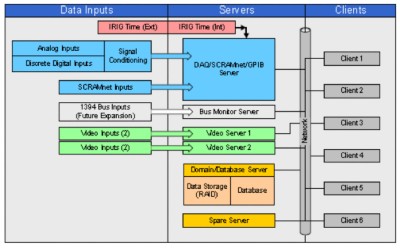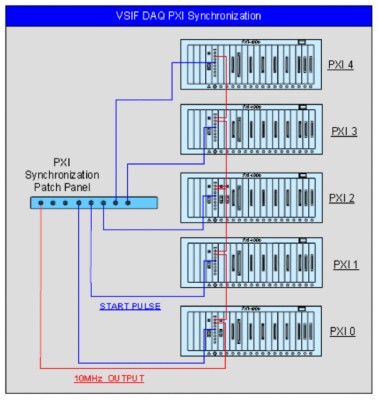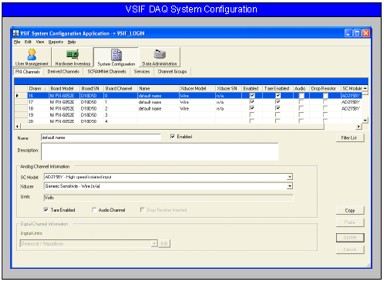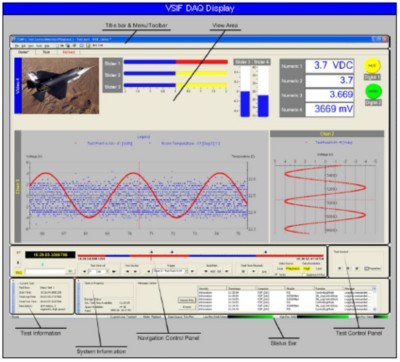Developing a Flexible F-35 Vehicle Systems Integration Facility Data Acquisition System
Michael Fortenberry, G Systems, Inc.
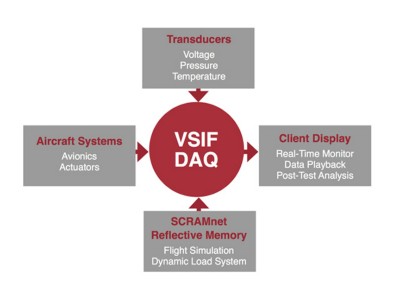
"Through the use of an advanced software architecture and reconfigurable, flexible hardware, G Systems provided Lockheed Martin Aeronautics with a highly configurable, expandable, high-channel-count system to meet current and future requirements of the F-35 Vehicle Systems Integration Facility."
- Michael Fortenberry, G Systems, Inc.
The Challenge:
Lockheed Martin Aeronautics needed an integrated system to acquire various types of data, including analog, digital, video, and additional data transferred from other systems through reflective memory, to use in its F-35 (also known as the “Iron Bird”) Vehicle Systems Integration Facility (VSIF) that monitors aircraft subsystem integration tests. Requirements included real-time display capabilities and the ability to easily manage all system components from transducer setup to data management.
The Solution:
G Systems developed highly flexible software and used off-the-shelf NI hardware and other third-party tools to create a high-channel-count system that exceeded Lockheed Martin’s initial requirements. The expandable nature of the PXI platform enabled us to increase the system’s channel count by 60 percent over the initial system requirements.
Flexible DAQ System
Figure 2 shows the general architecture of the VSIF high-channel-count data acquisition system. The system is distributed across several servers to enable load balancing and achieve the required performance. We built the distributed software architecture, which includes six major custom applications, to allow for future expansion of the system.
Data Acquisition Details
Analog and digital data acquisition is performed using five PXI chassis populated with a variety of NI data acquisition modules for a total of 640 analog channels and 480 digital channels. The ability to mix and match different types of data acquisition boards while maintaining time synchronization is important for controlling the overall hardware costs of the system. Time synchronization is maintained in the high-channel-count distributed system using an IRIG time signal that can be provided by the VSIF data acquisition system or another source within the VSIF lab.
The application that acquires the analog and digital data also performs PXI board verification and internal and signal path calibration using an external DC source controlled by GPIB. Automating the signal path calibration allows system verification to be performed automatically in just 20 minutes. With previous systems, this type of operation could take several hours and required significant operator interaction.
All data, which is delivered to the user in engineering units (EUs), accounts for the calibration values for the analog-to-digital converter, the signal conditioning module, the transducer, and zero nulling values where appropriate. Derived channels, which are channels calculated from information contained in other channels, such as Watts=Volts*Amps, can be calculated as well. Additionally, the built-in interface-to-link user-defined external DLLs in the system don’t require the software to be recompiled to create more complex derived channels.
Centralized DAQ System Configuration
The configuration information for the VSIF data acquisition system is stored in a relational database. We developed a custom graphical user interface (GUI) that system administrators use to configure every aspect of the data acquisition system, including the following:
- User Management
- Administering eight levels of user privileges for the system
- Hardware Inventory
- Managing available hardware such as PXI boards and transducers
- Updating calibration information and calibration dates for all equipment
- System Configuration
- Managing current hardware connections
- Programming user-defined derived channels
- Data Administration
- Archiving or exporting data and databases to tape or other media
- Cleaning up unused data in the database
- Reporting
- Creating several standard reports of system or channel configurations, including historical data on calibration
- Providing capabilities to add new user-defined reports
The application is designed to help system administrators easily handle the system’s high channel count by providing capabilities such as column sorting and filtering, channel group definitions, multirecord editing, and copy/paste functionality. Through user permissions, any user can view the system configuration, but only authorized administrators can change values. Several administrator permission levels are provided to allow precise definition of privileges for an individual user.
A Highly Configurable Data Display
Since many different user groups test various aircraft subsystems during integration tests, a single static user display was not a good solution for the VSIF data acquisition system. Instead, we created a dynamic user-configurable data display application that allows any user to create custom views of data with several indicator options.
This application supports advanced navigation functions, so users can instantly review data in real time or recall and view logged data from previous test runs. They also can set triggers and alarms to quickly find points of interest in data.
The system stores all information for an individual user configuration in the database, which can be exported along with test data for stand-alone review or playback. This makes it possible for a user to take a snapshot of test data, including all calibration and transducer information from several test runs, and use it independently of the main VSIF data acquisition system database, which can be useful for offline analysis or presentation.
The test control/monitoring/playback application shown in Figure 6 provides several modes of operation for the user. The system constantly acquires data and publishes it in a “low res” format to six client workstations. As the published data set is received, it is buffered continuously on the local client in a 30-minute rolling buffer. From this buffer, a user can look back in time at data that was published or logged and replay it in real time if desired.
When the operator chooses to log data, the "high res" data is logged to file and later transferred to a central repository. These test runs can be downloaded to a workstation for detailed reviews of the data in playback mode. The user can play back the data in real time or can navigate through the logged data timeline using several navigation options.
Data Management
All logged data is controlled and protected in the VSIF data acquisition system. The data is automatically moved from the acquisition servers to a central data storage unit (RAID) when a user starts logging a test run. Users can review the test data but cannot delete any test data from the RAID. Both the data display and data analysis export application can directly call up data from either the RAID or an archived dataset. This allows relatively unskilled users to easily review previously logged data with a minimal amount of VSIF-specific training.
Data Analysis
The VSIF data acquisition system provides advanced analysis capabilities through a custom DIAdem data interface (DDI) application that exports data to the DIAdem analysis package or to simple ASCII text files. The DDI leverages all the database interface and EU conversion functionality developed for the data display application to feed data directly into DIAdem through an OLE interface. The application allows the operator to easily select the test run(s) and channel(s) to export to DIAdem and supports merging data from several test runs.
A System Built to Last
Through the use of an advanced software architecture and reconfigurable, flexible hardware, G Systems provided Lockheed Martin Aeronautics with a highly configurable, expandable, high-channel-count system to meet current and future requirements of the F-35 Vehicle Systems Integration Facility.
After nearly 15 years of running the data acquisition system 24/7, the system is still reliably functioning. But, as with any hardware/software system, it sometimes needs upgrades to avoid obsolescence. Since we designed the VSIF data acquisition system using off-the-shelf technology rather than propriety technology, the upgrades have been a smooth process for Lockheed Martin.
Products in This Case Study

